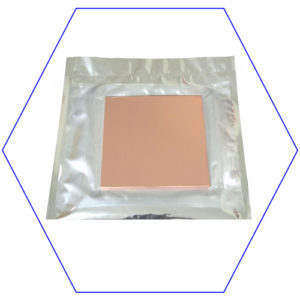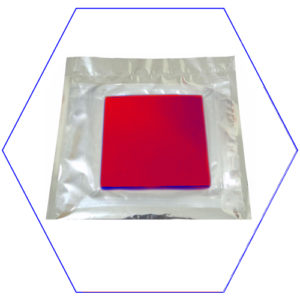Graphene semiconductor - modified from a superconductor
Since graphene’s first synthesization in 2004, the development of a graphene semiconductor has been a goal of the scientific community.
At first, it is sensible to take a step back and examine graphene as such. Graphene is a newly discovered super-material. Its (accidental) discovery – which earned each of the scientists a Nobel Prize – may be a landmark breakthrough for a host of modern technological fields; and especially for computing.
Graphene is the most conductive material ever synthesized by man; furthermore it is flexible, transparent, and biocompatible. The material is uniquely structured, as it is a single layer of carbon atoms in a honeycomb network with metal-like properties.
Due to the negligible thickness of one atom, the material is effectively two-dimensional.
Is graphene a semiconductor?
Its extreme regularity and conductivity rank it as a superconductor; however they do not lend graphene semi-conductive properties. The reason is simple – in this kind of environment, a band gap is not possible.
Due to the immense conductivity, flexibility, and durability, the research of modifying graphene to introduce semi-conductive behavior is intense and widespread. Most of the directions explored were of a chemical nature – various chemicals/atoms were added to graphene into order to stimulate semi-conductive properties.
Difficulty of the chemical approach
While the logic of the chemical approach is reasonable, it introduces the problem of impurities within the chemical that affect the nano-scale properties of graphene / chemical defects.
Mechanical approach
Another kind approach was discovered in 2015. The mechanical approach, or as the researches call it, graphene engineering, depends on wrinkling the graphene layer. While electrons move through straight graphene without hindrance, the crease around the wrinkle creates a junction that stops them.
At the nano scale, the electron is trapped by quantum confinement and brought to 1-D. This effectively introduces a band gap into the system and theoretically makes way for a graphene semiconductor.
A band gap was found in a graphene buffer layer
When heating silicon carbide at 1 360 °C, researchers had analyzed the band gap of individual layers.
To their surprise, the first layers which were deposited, so-called buffer layers, had a band gap of 0.5 eV. When the experiment was repeated under 1 340 °C, the band gap was nonexistent. The relationship between temperature and band gap forming remains to be fully understood; though it is clear that there is a way to influence the graphene’s band gap through modification of the production process.
-
Graphene paste
13 € – 152 € Select options -
Graphene powder
Read more -
CVD graphene film on a 2mm quartz substrate
37 € – 519 € Select options -
CVD graphene film on copper substrate
19 € – 1,377 € Select options -
CVD graphene film on a silicon substrate with flint oxide
37 € – 519 € Select options -
CVD graphene on customers substrate
15 € – 28 € Select options -
Graphene oxide
69 € – 17,744 € Select options -
CVD graphene on PET film 100um
37 € – 519 € Select options
Graphene semiconductor - a new avenue for computing
The gravity of graphene semi-conduction’s discovery can be underscored by IBM’s 3 Billion USD investment into graphene semiconductor development.
Quantum computing
Due to their nano-scale, graphene semiconductors can be used in quantum computing; especially on building drastically smaller and more efficient dynamic random-access memories.
Graphene-silicone composites
One of the prospects is that graphene will finally substitute silicon computing technology. That is not the only possible outcome, however, since graphene and silicone can be combined together in radio-frequency transistors, and optical devices.
These would still be based on silicon; though their performance would be enhanced by graphene. The silicon technologies struggle at nano-scales under 20 nm; while graphene is well usable even below 10 nm. Furthermore, graphene additions provide analogue functionalities to silicon complementary metal–oxide–semiconductors.










